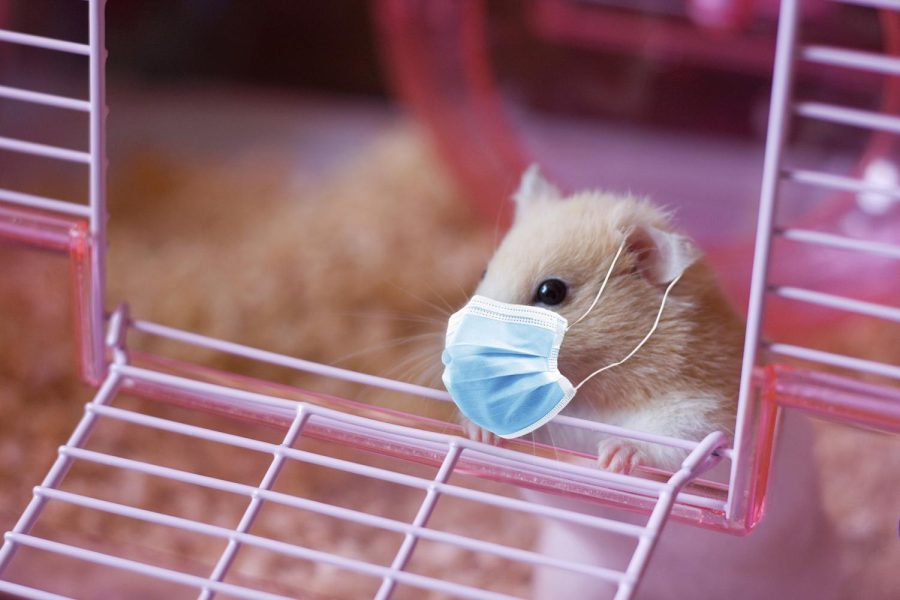The Hamster to COVID Pipeline
April 7, 2022
According to a genetic examination of viral samples from pet hamsters, the Delta form of SARS-CoV-2 likely moved into Hong Kong and started a human COVID-19 outbreak. The findings back up prior suspicions that the outbreak was caused by a pet shop.
Hamsters are a popular model for investigating SARS-CoV-2 because they are very vulnerable to the virus. The Hong Kong study, however, is the first to prove that hamsters may become infected outside of the lab and can spread the virus on to other hamsters and people. Hamsters are only the second animal known to be able to infect people, after minks. In late 2020, small outbreaks of COVID-19 in people in Denmark and the Netherlands were linked to farmed mink, sparking panic and mass culls.
The latest study points to the pet trade as a route for viral spread, says co-author Leo Poon, a virologist at the University of Hong Kong. But to be fair to the hamsters, people are still much more likely to be infected by each other than by pets, he says.
Nonetheless, Marion Koopmans, a virologist at Erasmus University Medical Center in Rotterdam, thinks it’s critical to keep a tight eye on the pet trade. She worries that SARS-CoV-2 might continue to circulate in animals, evolve in unforeseen ways, and subsequently spread to humans, adding that “we don’t need any more surprises with this virus.” Because Hong Kong has a stringent zero-tolerance policy for COVID-19, Poon thinks it was a bit unusual when a 23-year-old pet-shop worker tested positive for Delta on January 15. Delta was last spotted in the community in October, according to the city.
Within days, public-health inspectors had swabbed over 100 animals at the pet store and another 500 at the supply warehouse. SARS-CoV-2 viral RNA or antibodies were found in 15 of 28 Syrian hamsters (Mesocricetus auratus), but not in dwarf hamsters, rabbits, guinea pigs, chinchillas, or mice. The researchers next examined the genetic sequences of samples taken from 12 hamsters and the first three affected persons, including the pet-store employee and a shop visitor. All of the samples had a Delta variety that had never been seen before in Hong Kong, and they all came from the same source.
The researchers discovered some variation in the sequences and concluded that the hamsters were infected in November, before arriving in Hong Kong, and that the virus had been propagating unnoticed among the animals, acquiring a few single-nucleotide changes along the way.
The pet-shop employee and visitor were most likely infected at different times, and Poon believes there might have been additional leaps. Most astonishing, he says, was that the virus could still transmit between people fairly successfully after multiplying in hamsters.The animals were brought in from the Netherlands, and additional examination of genomes uploaded to a public worldwide database revealed that they were most closely related to sequences discovered in individuals in Eastern Europe.
The research and its findings, according to Koopmans, convinced her that the variation was transported into Hong Kong in the animals. She believes it will be critical to determine the origins of the virus in hamsters. However, virologist Arinjay Banerjee of the University of Saskatchewan in Saskatoon, Canada, says the researchers can’t rule out the possibility that the hamsters were infected by a human in Hong Kong and were not the ones who brought the virus into the nation. There are a lot of individuals touching hamsters when they’re being transported.
In the end, he adds, the danger of hamster infection appears to be modest, but it’s something to be cautious of.








